In the market for a “green” TV? Here are our top picks for eco-friendly, and energy efficient, TVs.
Table of Contents
Next time you’re watching the latest David Attenborough documentary about climate change, you might want to consider the eco-friendliness of your flat screen. An eco-friendly TV? Isn’t that an oxymoron? Not quite.
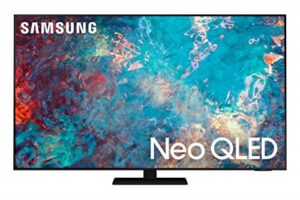
Best for gaming and energy efficiency
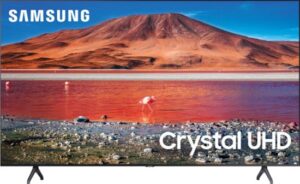
Most energy efficient 65-inch TV
Samsung 65-Inch Class 7 Series LED 4K UHD Smart Tizen TV UN65TU7000FXZA
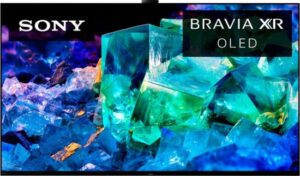
Best for recycled content and eco-friendly features
Sony BRAVIA XR 65-Inch Class A95K 4K HDR OLED TV with Google TV (2022) XR-65A95K
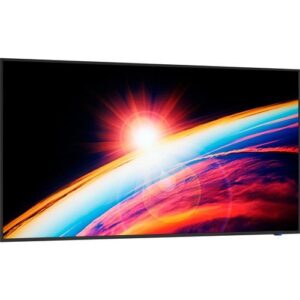
Best affordable, energy efficient TV
Sharp NEC 65-Inch E658Q 4K UHD Display with Integrated ATSC/NTSC Tuner
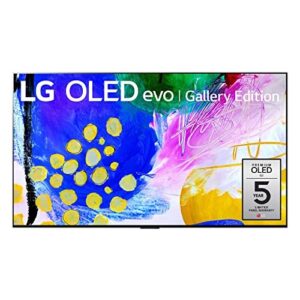
Best for home cinemas
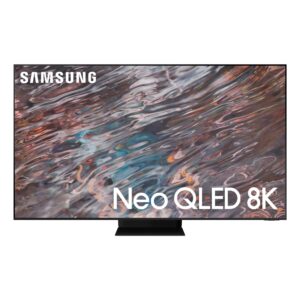
Runner-Up for home cinemas
Samsung 85-Inch Class QN800A Series Neo QLED 8K UHD Smart Tizen TV QN85QN800AFXZA
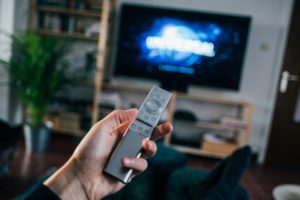
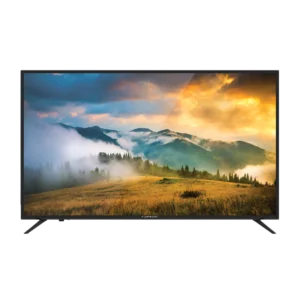
Best outdoor TV
In the last decade, many companies have embraced the idea of the ‘green screen’ and shaken up their TV designs. This means more eco-friendly packaging, conflict-free sourcing of raw materials, improved energy efficiency, and greater recycling potential. And, because there have been such improvements in design and energy efficiency, it’s now perfectly feasible to run an LED TV off-grid using a 50% smaller solar panel set-up!
All that said, there’s a heck of a lot of greenwashing when it comes to TVs. I’ve dug into the sustainability reports, specifications, and labelling, and talked to representatives from various electronics companies to get the dirt on so-called eco-TVs.
Below, you’ll find our rankings for the best eco-friendly TVs. We believe every model on this list is a better buy than most TVs out there.
Note that we haven’t ranked these TVs, given that the list includes large and small models with a variety of features. Instead, we’ve highlighted select TVs that are great choices for gaming, home cinema, energy efficiency, and affordability, as well for use in an RV, outdoors, or with solar panels.
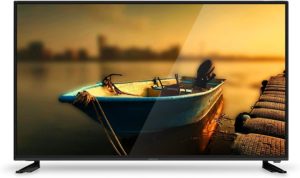
Best energy efficient smaller TV: Furrion FEFS43N8A 43 Inch Full HD LED TV for RV
Highlights: Good quality build att an affordable price. Energy Star rated!
- Energy Star
- Integrated Dolby Digital sound
- Dynamic brightness settings for great visuals and energy saving
- Affordable
- Good connectivity
- VibrationSmart and ClimateSmart tech
- Has feet but no stand (you can buy a stand separately)
- 20 W speakers only
- Not smart, so no easy streaming or voice commands
Specs:
Screen size: 43 inches
Display tech: LED
Resolution: 1920 x 1080
Refresh rate: 60 Hz
Connectivity: 3 x HDMI Inputs (HDMI CEC – HDMI 1.4), 1 x D-Sub (VGA) Input, 1 x PC Audio Input, 1 x Component (YPbPr) Input, 1 x Composite AV Input, 1 x Antenna (RF) Input, 1 x USB Input, 1 x Audio LR Output, 1 x 3.5mm Headphone Output, 1 x Optical Audio Output
Power supply: AC 100V-240VAC 60/50Hz
Power consumption: kWh
Furrion’s 43-inch LED HD RV TV offers 1080p, great connectivity, and the company’s robust build quality. This affordable TV has dynamic brightness settings to help save energy and optimize picture quality, and decent sound thanks to the integrated Dolby Digital audio, two built-in speakers (20 W), and five sound modes.
It has Furrion’s famous ClimateSmart and VibrationSmart, meaning the TV is built to cope with extreme temperatures and humidity as well as to resist or withstand vibration on the road. It is also Energy Star rated, according to the company. I’ve asked Furrion for a copy of the Energy Label, though, as annual power consumption and the label aren’t available online.
This model has multiple connection points including 3 HDMI inputs, a USB Port, VGA, PC Audio, Component Video Input, AV Input, and more. It also comes with Furrion’s 1-year warranty, which can usually be extended if you purchase using a credit card.
Furrion and sustainability
Furrion is a well-known name in RV and off-grid electronics, making refrigerators and other essential items for life on the road, in the woods, or wherever you’re watching your energy consumption carefully.
Furrion engages in carbon offsetting and other environmental initiatives to minimize their impact, in addition to making renewable energy products such as solar panels designed to support off-grid living. They have publicly stated an intention to achieve net positive carbon emissions across manufacturing and product lines, and zero waste across operations worldwide by 2022/23. To achieve this goal, the company built a solar array in 2016 to fully power its US headquarters. They plan to expand their infrastructure to solar farms, off-grid housing and smart city ecosystems.
Since 2013, Furrion has partnered with Trees for the Future® to enable 100,000 trees to be planted. They also pledged support to non-profit The Ocean Cleanup® in 2017 to support efforts to get rid of plastic waste in the ocean.
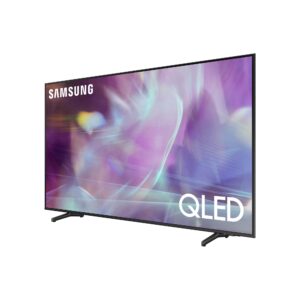
Best 60-Inch TV: Samsung QN60Q60AAFXZA 60-inch UHD Dual LED Quantum HDR Smart TV
Highlights: Solar-powered remote, auto shut-off for energy saving, and excellent picture accuracy and contrast with flexible connectivity. Uses less energy than other similarly sized TVs, but has a low refresh rate, so not the best for gamers.
- High resolution 4K display
- Solar-powered remote
- Eco-sensor and auto shut-off for energy saving
- Great contrast ratio and dedicated warm and cool backlight LEDs
- Samsung will recycle at end of life
- Smart TV easy to connect with other devices
- Voice control
- Discontinued model, so grab it fast if you like it!
- Not ideal for gamers – bare minimum refresh rate (60 Hz)
Specs:
Screen size: 60 inches
Display tech: Quantum Dot QLED
Resolution: 3840 x 2160
Refresh rate: 60 Hz
Connectivity: 3x HDMI, 2x USB, Ethernet (LAN), Terrestrial / RF input 1/1(Common Use for Terrestrial)/0, Digital Audio Out (Optical), Audio Out (Mini Jack), Audio Return Channel Support (via HDMI port), RS232C Supports USB to EX-Link Adapter, RF In (Terrestrial / Cable input / Satellite Input) 1/1(Common Use for Terrestrial)/0, HDMI A / Return Ch. Support, eARC, HDMI Quick Switch, Anynet+ (HDMI-CEC).
Annual power consumption: 119 kWh
It’s oddly difficult to find a 60-inch TV these days, but the Samsung Q60A ticks that box and a lot more. This QLED HDR TV offers impressive color and visual display, with crisp pictures thanks to a contrast ratio of 4653:1. It also has dedicated warm and cool LED backlights, making it a fantastic TV for darker rooms.
This smart TV responds to voice commands thanks to built-in Amazon Alexa, Google Assistant and Bixby. It also offers a lot of connectivity options and works with Netflix, Hulu, Prime Video, YouTube, ESPN, Apple TV+, ShowMax, MLB.TV, Spotify, CBS, VUDU, Vimeo, Plex, Google Play Movies & TV, Samsung TV Plus, Full Web Browser, and more.
The Q60A has an eco-sensor that adjusts brightness based on the light in the room, helping to save energy. It also comes with a solar powered remote control (SolarCell) that helps reduce the need for new batteries. The auto shut-off also helps save energy, and the TV comes in Samsung’s signature packaging that you can turn into a cat house or side table as is your wont.
Typical power consumption for this TV is 65 W and the maximum is 160 W, with the Q60A using just 0.5 W on standby. Assuming average TV use of five hours a day (As per Energy Label) at typical power consumption, this works out to 119 kilowatt hours a year for this TV, which is very low even compared to some 50- and 55-inch TVs.
One downside to this TV is that you can’t toggle the refresh rate (60 Hz). This may mean some gamers find it less than satisfactory, though many reviewers still seem to enjoy using it for video games. The TV does have three HDMI ports though and has Motion Xcelerator technology to keep fast action scenes smooth. It also has a V-Chip, which allows parents to restrict the availability of movies based on their rating.
For a faster refresh rate of 120 Hz (but worse dark contrast), check out the 65-Inch Samsung QN65QN85AAFXZA NEO QLED 4K UHD Smart TV (View on Walmart), which we review below.
Samsung and sustainability
Samsung has upped its game in recent years, as concerns sustainability. In addition to making some of the most sustainable smartphones available in the U.S. (and the lowest radiation celphones), Samsung has taken some great steps toward making eco-friendly TVs.
Samsung is the only TV manufacturer to have all its global semiconductor manufacturing sites certified by UL as zero-waste-to-landfill, for instance.
The company also uses eco-friendly packaging across its TV range now, not just for the Lifestyle collection. This packaging is specially designed to be easily upcycled into creative home furnishings, Scan a QR code on the box, find a design from the online manual, and play dot-to-dot to turn your old TV box (already beloved of toddlers and cats alike) into a functional newspaper or magazine rack, cat house, or a small end table, among other things.
Samsung says that if the box from every new TV it sells in a year was repurposed using designs from its website, this could reduce greenhouse gas emissions by 10,000 tons.
Perhaps more meaningful in terms of sustainability is Samsung’s inclusion of solar power packs with many of its TVs remote controls. These remotes can charge their batteries from sunlight or indoor light, which Samsung calculates could save 99 million AA batteries over seven years (the average time before a person replaces a new TV). These solar charging power packs could help reduce energy consumption by up to 80 percent according to Samsung.
The biggest milestone for Samsung, though, is that it has finally worked out how to make its recycled plastic materials feel premium. This means it is now using much more recycled material in its TVs. The company estimates that the inclusion of more recycled materials could help reduce GHGs by more than 500 tons over seven years.
Samsung has also extended its recycling program, meaning that most U.S. customers now have good options for recycling their old Samsung TV (and other TVs in some parts of the country). With the Samsung mailback program, you can send Samsung branded products weighing up to 50 pounds to the company’s recycling partners (often for free). For TVs weighing more than 50 lbs., and for customers in DC who want to recycle a non-Samsung TV when buying a new Samsung model, you can email j2.kang@samsung.com to request a mail-back shipping label.

Best for Gaming and Energy Efficiency – Samsung QN65QN85AAFXZA 65-inch NEO QLED 4K UHD Smart TV
Highlights: Incredibly energy efficient and great for gaming and group watching, with a high 120 Hz refresh rate and wide viewing angles. Low native contrast though, so not the best in a dark room.
- The most energy efficient high-spec model we’ve found!
- Great for gamers with high (120 Hz) refresh rate
- Wide viewing angles for group watching
- Lower weight (less CO2 emissions)
- Not the best native contrast, so not great in darker rooms
Specs:
Screen size: 65 inches
Display tech: Quantum Dot QLED
Resolution: 4K UHD 3,840 x 2,160
Refresh rate: 120 Hz
Connectivity: HDMI (x 4); USB (x 2); RF In (x 1); Digital Audio Out (x 1); Ethernet (x 1)
Annual power consumption: 160 kWh
Weight: 66.8 lbs.
If you’re looking for an energy efficient, feature-packed TV perfect for gaming, the Samsung QN85 65-Inch NEO QLED 4K UHD Smart TV is a great choice. Using just 160 kWh a year (per Energy Label), this TV uses less energy to do more than most commercial grade display monitors and costs only a little bit extra.
The Samsung QN85 65-inch TV also weighs just 66.8 lbs., which is about 7 lbs. less than the 65-inch Sony Bravia A95K model. The 2019 Samsung 7 Series model weighs just 45.4 lbs. though! Lower weight translates to less shipping associated carbon emissions.
We also like that this TV offers wide viewing angles, meaning it’s an excellent choice for group watching of your favorite shows and movies. The high refresh rate (120 Hz) makes it a good fit for gamers too, unlike the 60-inch Q60 Samsung.
This TV also boasts six speakers for 60 W 3D surround sound and has an impressive 4K UHD display that is bright enough to handle serious glare. The NEO Quantum Processor can upscale lower-resolution content to 4K quality too.
You’ll find built-in Alexa for easy voice command even without the SolarCell solar-powered remote. There are four HDMI inputs and plenty of additional connectivity, and it’s a breeze to use streaming services through Samsung’s OS.
As for the picture, the matrix of Quantum Mini LEDs focus light precisely for excellent contrast and Samsung’s HDR10+ means that colors are adjusted scene-by-scene. The downside to this one, versus the Q60A, is a lower native contrast, meaning some viewers might notice blooming in darker rooms.

Most energy efficient 65-inch TV: Samsung 65-Inch Class 7 Series LED 4K UHD Smart Tizen TV UN65TU7000FXZA
Highlights: Energy Star certified 65-Inch Smart TV with low energy consumption, plenty of great features, and very affordable! Not the best for gaming, and fewer connectivity options and ports than newer models, with a standard (non-solar) remote.
- Energy Star certified energy efficient TV
- Likely uses some recycled plastic in the frame/rear panel
- Very light!
- Comes with a stand
- V-Chip parental controls
- Voice command and streaming options
- Fewer ports
- No solar remote (unlike newer Samsung models)
- 60 Hz refresh rate a little low for gaming
- LED not OLED or QLED – slightly lower quality visuals
- Lower wattage (20 W) speakers than newer models (60 W)
Specs:
Screen size: 65 inches
Display tech: LED
Resolution: 4K UHD 2160 p
Refresh rate: 60 Hz
Connectivity: HDMI (x2), USB (x1), USB 2.0 (x1), HDMI Audio Return Channel (ARC), Ethernet Port(s), RF Antenna Input, Bluetooth Enabled (4.2), WiFi, Ethernet, ATSC, Clear QAM, Digital Optical Audio Outputs (x1).
Power consumption: 144 kWh
Weight: 45.4 lbs.
Samsung’s 2019 65-Inch Class 7 Series LED 4K UHD Smart Tizen TV is one of very few TVs with Energy Star certification. This model offers plenty of bells and whistles but still manages to keep annual energy use to 144 kWh on average. This is a little bit lower than Samsung’s QN85A which uses 160 kWh annually. It’s also significantly more energy efficient than the Sony Bravia A95K which uses 258 kWh each year. This model is also a lot lighter than many other 65-inch TVs, which translates to lower overall carbon emissions, especially during transport.
This 7 Series TV doesn’t come with Samsung’s new SolarCell remote control. Instead, you’ll need to recharge or replace the batteries yourself to keep the remote working. It does, however, come with a stand, unlike many similarly sized models that are designed for wall mounting.
With this Smart TV, you can use streaming services including Apple TV+, Disney+, Google Play Movies & TV, Hulu, Netflix, Prime Video, SHOWTIME, Sling TV, and YouTube. It also works with Apple AirPlay, Apple AirPlay 2, and SmartShare and there’s a V-Chip to help out parents who want to screen content for kids. This Samsung model also works via voice command, integrating with Amazon Alexa, Google Assistant, and SmartThings.
Downsides of this model include far fewer HDMI inputs, with just two in total and no HDMI 2.1 inputs. It also has just one USB port and one USB 2.0 port, with no USB 3.0 ports. As it’s not an OLED or QLED TV, you may notice slightly lower picture quality compared to the latest (far pricier) Samsung, Sony, and LG models. It also has lower power speakers (20 W versus 60 W with newer models). For most folks, though, this 2019 TV is a great choice that marries energy efficiency, functionality, and affordability.

Best for recycled content and eco-friendly features: Sony BRAVIA XR 65-Inch Class A95K 4K HDR OLED TV with Google TV (2022) XR-65A95K
Best for recycled content and eco-friendly features: Sony BRAVIA XR 65-Inch Class A95K 4K HDR OLED TV with Google TV (2022) XR-65A95K
- Made with recycled plastic (for 60% virgin plastic reduction)
- Automatic brightness control
- Automatic viewer sensing
- High refresh rate (120 Hz) – great for gaming
- Beautiful visuals with high contrast and brightness
- Packaged using 35% less plastic (on average)
- Higher energy use than the Samsung
- Weighs a little more than the Samsung 65-Inch
- No solar remote
Specs:
Screen size: 65 inches
Display tech: OLED
Resolution: 4k UHD
Refresh rate: 120 Hz
Connectivity: HDMI, Bluetooth, USB, Wi-Fi, Ethernet
Annual power consumption: 258 kWh
Weight: 74 lbs.
With the A95K and its counterparts, Sony has knocked it out of the park for visuals and audio. These TVs are powered by the intelligent Cognitive Processor XR™, which delivers precise, crisp, high contrast, natural colors and shading. Sony’s latest TVs offer the company’s widest palette of colors yet, with greater saturation and brightness thanks to the QD-OLED panel and XR Triluminos Max.
The A95K also boasts tons of smart features, connecting easily with Google TV and Google Assistant. You can stream Netflix, Disney+, Apple TV, HBO Max, Peacock and other services and stream from your iPhone or iPad using AirPlay 2 support.
The A95K is a great choice for gamers too, with a high refresh rate of 120 Hz and an input lag as low as 8.5ms. HDMI 2.1 features such as 4K/120, VRR, and ALLM will also make for a great gaming experience.
There’s also enhanced audio with dual subwoofers and dual large-sized actuators that vibrate to create sound through the entire screen. The Acoustic Center Sync makes it easy to connect the Bravia TV to Sony soundbars for even more sound options. Sony also includes a multi-position stand that is easy to set up for a more comfortable viewing experience.
Bravia Cam not only helps to detect when no one is watching the TV, it also lets you enjoy video chats and use gesture controls.
Best of all, Sony’s compact backlit remote is easy to use, comfortable to hold, and has an integrated finder function for when it inevitably gets lost.
Note, though, that the Energy Label for the A95K states that annual energy use based on 5 hours of use a day clocks in at 258 kWh. That’s quite a bit higher than the Samsung 65-inch model we also recommend, which only uses 160 kWh annually. To keep energy use low, choose energy saving settings rather than the highest brightness settings, and plug your TV into a power bar you can easily turn off, rather than keeping the TV in standby mode.
Sony and sustainability
In many respects, Sony Bravia OLED TVs are some of the most eco-friendly televisions currently available. The A95K/A90K/A80K series of TVs are made using SORPLAS™ recycled plastics in the rear cover, reducing overall use of virgin plastic by around 60 percent for the whole TV. This plastic is also made in such a way that it can be repeatedly recycled without degradation, making for a better closed loop system and overall reduction in resource use.
Sony has also taken steps to make their products lighter overall, without compromising performance. This helps to reduce shipping weights and associated carbon emissions. On average, Sony has also reduced its plastic packaging by 35 percent and cut packaging size by 15 percent and weight by 10 percent. This has helped reduce associated carbon emissions per TV by around 15 percent! The company has even reduce how much ink it uses on packaging by a whopping 90 percent, saving more resources.
These TVs also come with Bravia Cam, which detects viewer movement and automatically dims the screen when no one is in front of the TV. The Bravia OLEDs also have automatic brightness control to optimize for the room’s lighting. This helps to further reduce power consumption, making these TVs potentially some of the most energy-efficient on the market.

Best affordable, energy efficient TV: Sharp NEC 65-Inch E658Q 4K UHD Display with Integrated ATSC/NTSC Tuner
Highlights: Energy efficient (Energy Star!), super affordable 65-inch display. Not a fully rounded TV but it does have an integrated TV tuner and is packed with useful features.
- Much more energy efficient than full TVs
- Lighter (meaning lower shipping emissions)
- Comes with tabletop stand and wall mounts
- Has an integrated TV tuner and integrated audio
- Not ‘smart’ – no easy streaming or voice commands
Specs:
Screen size: 65 inches
Display tech: LED
Resolution: 4k UHD
Refresh rate: 60 Hz
Connectivity: Digital: HDMI (3 x 2.0), HDMI Audio, Audio Mini-Jack, RS-232C, LAN (one at a time), USB 2.0 (Media Player), USB-C (Power) / Analog: VGA 15-pin D-sub, Component, and Composite (shared with Component) input.
Annual power consumption: 175.2 kWh
Weight: 51.3 lbs.
The Sharp NEC 65-Inch E658Q is a 4K UHD display is a great choice if you’re just looking for a high-performing monitor rather than a full smart TV. The display is LED direct-lit and offers 3840 x 2160 p resolution with a contrast ratio of 8,000:1 (with local dimming turned on). This model is also much lighter than a full-fledged TV at just 51.3 lbs. That’s more than 20 lbs. lighter than the Sony Bravia 65-Inch A95K!
The E658Q supports video muting and audio mute, has a joystick to guide screen operations, tilts back and forth to plus or minus ten degrees for optimal installation angle, and now has temperature and ambient light sensors and adjusts accordingly.
There’s a built-in NTSC/ATSC (8-VSP, Clear QAM) analog/digital tuner, which is rare for monitors and essentially makes this display a TV, especially because this model also boasts built-in 10 Watt speakers. There are variable sound modes and picture modes, including energy saving, game, and movie options. The E658Q even offers parental control via a V-Chip, has built-in closed captioning, and has a sleep timer!
This model has a USB Type-C port for an external power supply (5V/3A), and can take a USB 2.0 input for the media player. You can use this to play presentations or display images as JPGs from a USB flash drive without needing to involve a PC or Mac. That said, the monitor is compatible with Windows and Macintosh computers and has 3 HDMI 2.0 inputs as well as HDMI audio, mini-jack, and an analog VGA 15-pin D-sub, Component, and Composite (shared with Component) input.
Sharps’ monitor has a refresh rate of 60 Hz and an excellent response time of 8 ms, meaning gamers might be just fine using this more affordable monitor instead of buying a more feature-packed TV. We also love that this model comes with a three-year manufacturer’s warranty (most TVs only come with one-year warranties).
The E658Q is the updated version of Sharp/NEC’s E657Q which is actually more energy efficient but costs more. The E657Q uses just 118 W compared to 144 W for the newer model. Both models use less than 0.5 W in standby mode. The Energy Star 8.0 rating for the E658Q is 96 kWh/1000 h. This works out to annual energy consumption of 175.2 kWh based on 5 hours of use a day. This is much lower than the Sony Bravia but higher than the Samsung 65-inch!
Sharp and sustainability
Sharp was at the forefront of LCD TV technology years back, which helped to reduce how much energy the average TV consumed. The company had a good reputation for making quality products and being a bit more sustainable than rivals. In 2015, however, Sharp licensed its U.S. brand to Hisense, after which is became unclear if the products remained good quality and more eco-friendly than most.
In 2022, though, Sharp announced its return to the U.S. TV market and we couldn’t be happier! Now selling TVs under the Sharp NEC brand, the company offers some excellent energy-efficient, high-performance displays and TVs at a much more affordable price than Sony and Samsung.
Giant TVs (over 70 inches)
Realistically, once you get into giant TV screen territory, there are no truly eco-friendly options. Everything uses more energy than the average family refrigerator and a huge amount of energy and materials go into building that screen and disposing of it down the line. That said, some of these massive TVs are better than others, so if you’re looking for a giant screen TV for the home cinema or common room, here are our top choices that are just a dash more sustainable than the rest.

Best for home cinemas: LG Evo G2 Series 83-inch Smart TV OLED83G2PUA
Highlights: A colossal TV that’s more energy efficient than similar-sized rivals. Offers incredible audio and picture quality, tons of connectivity, and is made by a company that is more sustainable than most in the business.
- Impressive visuals and audio
- Lots of connectivity options
- Energy-efficient for its size
- Impressive < 1 ms response rate
- Very small/slim frame
- No V-Chip parental control
- Lower resolution than the Samsung 8K 85-inch model
Specs:
Screen size: 83 inches
Display tech: OLED
Resolution: 4k 3840×2160 p
Refresh rate: 120 Hz
Connectivity: HDMI 2.1 Inputs (x4), HDMI Audio Return Channel (ARC), USB 2.0 Ports (x3), Ethernet Port(s), RF Antenna Input, Bluetooth Enabled (5.0), WiFi, Ethernet, ATSC 3.0 (NextGen TV), Clear QAM, Digital Optical Audio Outputs (x1)
Annual power consumption: 340 kWh
Weight: 90.2 lbs. (without stand)
The LG Evo G2 Series 83-Inch Smart TV is an OLED television that uses a colossal 340 kWh annually but is actually one of the more energy efficient large-screen models (the Samsung QN800A 85-inch TV uses 421 kWh annually!). It’s a good choice for family rooms and home theaters and also for gamers, with a high refresh rate and FreeSync and G-Sync compatibility. There are also four HDMI 2.0 ports and a response time under 1 ms.
The LG Evo G2 works with a vast array of streaming services, including: Netflix, Prime Video, Disney+, HBO Max, Hulu, Peacock, Apple TV+, Sling TV, Paramount+, YouTube, YouTube TV, Vudu, Spotify, Apple Music, Tubi, Peloton, Pandora, SHOWTIME, and STARZ. It also works via voice command through Amazon Alexa, Google Assistant, and Apple HomeKit and the remote has a microphone too.
Note that this model doesn’t have a V-chip, meaning you’ll need to use a workaround for parental controls. There’s also no stand included, though one is available for around $200. The screen mounts quite flush to the wall thanks to its thin profile. The borders are very small too, at just 0.24 inches, and it offers wide viewing angles, making it ideal for home cinemas.
The 4k display has an infinite contrast ratio for deep blacks and bright whites even in a dark room. It also boasts an impressive color range and a brightness booster max feature. The 60 W speakers also offer excellent quality Dolby Atmos sound.
LG and sustainability
LG Electronics, a South Korean company, seems to be engaged in some legitimately eco-friendly initiatives, including designing TVs in such a way as to make them easier to recycle. LG is also the only brand that currently carries the UL certification for recycled content. This is mainly for its sound bars, not for the TVs themselves, though.
The company won the Institute of Scrap Recycling Industries (ISRI) 2015 Design for Recycling (DfR) Award for their 4K ULTRA HD OLED and LED TVs, for instance. These TVs are made to be recycling-friendly, with:
- Mercury-free display panels
- Use of recycled and recyclable plastics
- Use of some PVC-free and brominated flame retardant-free components
- Smaller and lighter packaging
- Ease of disassembly
- Standardized materials and connection types
- Together, these design features make it easier for parts to be accessed and identified by recycling operations and easier to recycle overall.
The TVs included in their recycling program include those bearing the LG, LG Signature, Zenith and GoldStar names. The company claims that part of their sustainability efforts involves “informing consumers how much GHG [greenhouse gas] is emitted when they use a particular product,” though I haven’t seen evidence of this in product listings. In previous years, LG’s TVs tended to use a lot more energy than the most energy-efficient models from other brands, but the LG Evo G2 Series may be a sign of LG turning over a new leaf.
In 2011, LG Electronics introduced Eco-Index, an environmental assessment standard used internally to classify the sustainability of LG products. The goal is to gradually increase the number of Green 3 Star products in their range, with these products being more energy efficient than competitors. This is detailed in their latest sustainability report (2020-2021), which also lays out targets of:
- 50% Reduction in Carbon Emissions in the Production Stage Compared to 2017 (by 2030)
- Achievement of Carbon Neutrality through External Carbon Reduction by Expanding the CDM (Clean Development Mechanism) Project
As a guide, LG operations in 2017 produced 1.93 million tons of CO2e (carbon dioxide equivalents, i.e., greenhouse gases). That means their goal for 2030 still allows for the emissions of 96,000 tons of CO2 equivalents (or 20,000 cars on the road for a full year in the US). The company claims that 80% of the total energy use of their business sites in America comes from renewable energy, but they don’t include data on energy use overseas.
LG Electronics also complies with international regulations on hazardous substances including RoHS and REACH, and has implemented a supply chain green management program, the Green Program Plus, to monitor hazardous substances in their supply chain. They are also in the process of phasing out the use of Phthalates, Antimony trioxide and Beryllium in product components, and are working on removing PVC and BFRs from their products.
The company was the first to achieve Green Guard certification for low emissions from a TV, back in 2014, for their 55-inch Curved OLEG LG 55EC9300 TV. They have also earned the EU Eco Label for 9 TVs over the years, Korea’s Eco Label for 39 LED TVs, and Korea’s Green Certification for 12 TVs, though it’s hard to tell which, if any, of these are still available in North America.
At the January 2019 Consumer Electronic Show (CES), LG won a Sustainability and Eco-design award for their LG 55E9 55-inch E9 OLED 4K TV because the model is “…made of eco-friendly and recyclable materials including natural glass.” (View Price on Amazon).
All in all, LG is a decent choice for an eco-friendly TV, in terms of likely composition of the TV and the business itself.

Runner-Up for home cinemas: Samsung 85-Inch Class QN800A Series Neo QLED 8K UHD Smart Tizen TV QN85QN800AFXZA
Highlights: Incredible visuals make this a standout TV for home cinemas. It uses a lot more energy and has less connectivity than the LG 83-inch we recommend, though, but is about $1,000 more affordable.
- Impressive 8K visuals and upscaling
- Incredible 240 motion rate
- SolarCell remote
- Offers multiple split-screen options
- Costs less than the LG!
- Uses a lot of energy
- Fewer ports
- Heavier than the LG
Specs:
Screen size: 85 inches
Display tech: Neo QLED
Resolution: 8K (4320p)
Refresh rate: 120 Hz
Connectivity: HDMI Inputs (x4), HDMI Audio Return Channel (ARC), USB 2.0 Ports (x3), RF Antenna Input, Bluetooth Enabled (4.2), WiFi, RS-232 inputs (x1), ATSC 3.0 (NextGen TV), Clear QAM, Digital Optical Audio Outputs (x1)
Annual power consumption: 421 kWh
Weight: 95.5 lbs. (without stand)
Samsung’s 2021 QN800A Smart TV is a joy to behold. This beautiful TV screen uses full array local dimming for backlighting and has a high refresh rate, an impressive 240 motion rate, and 8K (4320 p) resolution. This makes it one of the best choices for a home cinema with incredible visuals and all the bells and whistles you could ask for. Every frame is seen with 33 million pixels at four times the resolution of 4K. And thanks to the Neo Quantum Processor, every picture can be elevated to 8K.
The processor also tracks sound to onscreen action and dims and brightens each frame for deep blacks and bright whites. The TVs smart sensors adapt the brightness and contrast to meet the lighting conditions of the room, and this model has an anti-reflection layer to make this a top choice for home cinemas.
Streaming services include: Apple TV+, Google Play Movies & TV, Hulu, Netflix, Prime Video, SHOWTIME, Sling TV, and YouTube. Samsung also offers its own free streaming service without subscription. The QN800A works with Amazon Alexa, Bixby, and Google Assistant for voice commands and works with voice control for the SolarCell remote control.
This TV even offers simultaneous streaming and phone mirroring, so you can have both on-screen at the same time. There’s a variety of layout and sound options too.
The main downside to this TV is its intense energy use. At 421 kWh annually, this TV uses considerably more energy than the LG Evo G2 Series 83-Inch model which has many of the same features.
Special Mentions
Solar TV
Not yet available outside of Africa, the Cello Solar TV is one to watch! Made to be highly energy efficient and powered by the included solar panel, the solar TV is a Smart TV with power functions to extend battery time by matching energy consumption to conditions. This system can also incorporate a range of extension kits for power, fan, phone charging, and even a refrigerator!
Here’s hoping Cello (a well-respected and ethical UK company) extends their off-grid solar-powered TV offerings to North America soon.
Furrion’s 12 V TV is also solar-ready and these models are also great outdoors. So, if you’re looking for an exceptionally energy efficient, RV-stable TV for life on the road, in the woods, or otherwise off-grid, check out Furrion below.
- Vibration-proof and suitable for cold and humid environments
- Incredibly energy efficient
- Works with a 12 V outlet (RVs and solar panels!)
- Built-in stereo and soundbar with great audio quality
- Works with Netflix and Amazon Instant Video
- Furrion sells some replacement parts for DIY fixes!
- Two-year manufacturer’s warranty
- A little pricier than similarly sized, less robust TVs
- Needs an adapter for use with standard outlets
- Fewer smart TV features

Best outdoor TV: Furrion FDUS50M7A 50-Inch 4K UHD LED TV
Highlights: Incredibly energy efficient, durably built, robust TV with lots of connections. Great for life on the road or outdoors in partial sun.
- Vibration-proof and suitable for cold and humid environments
- Incredibly energy efficient
- Dynamic brightness adjusts to meet conditions (and save energy)
- Integrated audio with Dolby Digital
- Furrion sells some replacement parts for DIY fixes!
- Two-year manufacturer’s warranty
- A little pricier than similarly sized, but less robust, TVs
Specs:
Screen size: 50 inches
Display tech: LED
Resolution: 3840 x 2160
Refresh rate: 60 Hz
Connectivity: 3 x HDMI Inputs (HDMI CEC – HDMI 2.0), 1 x Component (YPbPr) Input, 1 x Composite AV Input, 1 x Antenna (RF) Input, 1 x USB input, 1 x Optical Audio Output
Power supply: AC 100V-240VAC 60/50Hz
Power consumption: 168 kWh
The Furrion 50-Inch 4K UHD LED TV is an ultra-high definition TV with Furrion’s proprietary VibrationSmart and ClimateSmart technology. It is robustly built and designed for life outdoors, at home, or on the road. Unlike the 12 V 32-inch model, though, this larger TV requires a standard power supply.
The Furrion 50-Inch has a slim profile and can be wall-mounted or work with a stand (you’ll have to buy the hardware separately). It has an integrated sound system with Dolby Digital audio, and a decent refresh rate but don’t expect to play high-spec games on this one.